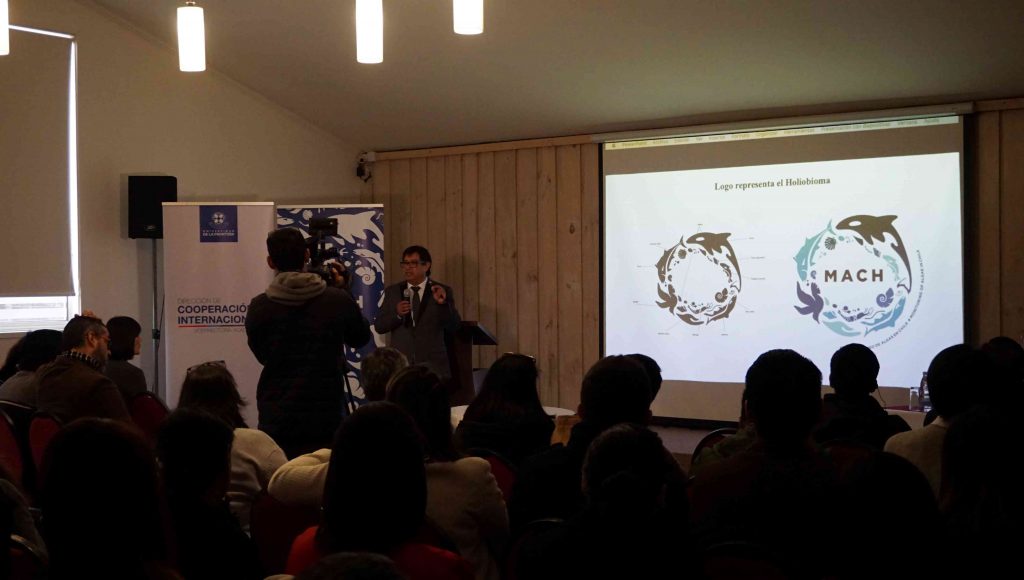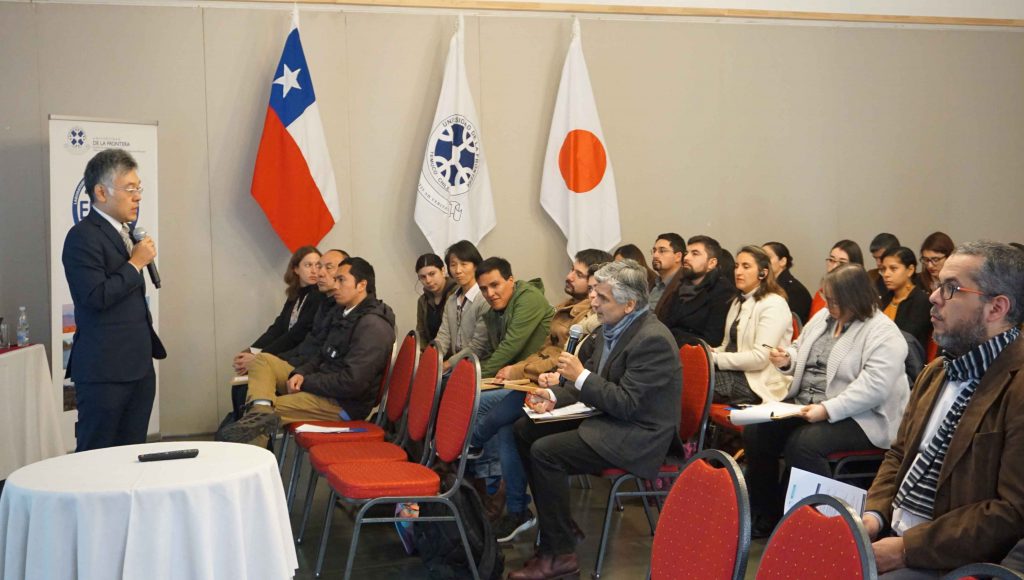On September 4, we have co-organized a public seminar at Temuco city, Araucanía Region with Universidad de La Frontera (UFRO). Audiences included local regional Araucanía government, Temuco Municipality staff, researchers and students and staff from UFRO. Main objective of this public seminar was to inform to citizens and public sectors of Temuco city and surrounding area a progress of ongoing project and its potential benefit to their community.
First, Professor Milko Jorquera, director of MACH project, overviewed the ongoing progress in its second year of 5-years project: monitoring and sampling through all part of Chile (link:), that is, Antofagasta, Puerto Saavedra, Bahía Mansa, Puerto Montt, Calbuco, Cucao, Quellón, Melinka and Punta Arenas, and analyses using the monitored and sampling data.
Second, our invited Professor Yoshihiro Ito (associate professor of Kyoto University, Disaster Prevention Research Institute; link: ) talked how they are constructing an observation system for a seismic blank area in Mexico, and how simulation of tsunami tells a better evacuation behavior to escape from the attack of tsunami. He also talked about training programs for tsunami evacuation in cooperation with regional administrations, schools, companies in public infrastructure and so on.
*Professor Ito is the Japanese leader of the earthquake research project that is proceeding in Mexico (link:) on the same framework as our MACH project, the SATREPS International Science and Technology Cooperation Program.
Third, Professor Shinji Nakaoka (lecturer of Hokkaido University, Graduate School of Life Sciences; link:) explained plainly how we can understand the behavior of ecosystems by formulating basic properties such as growth rates and competition between organisms mathematically. He exemplified how broadly such theoretical studies are applicable to different phenomena that would include harmful algae bloom.
At last, the talk of Professor Kei Yoshimura (professor of the University of Tokyo, Institute of Industrial Science; link) also enabled beginners to follow the background of theory, modeling, and simulation in the field of geophysics. He emphasized the accuracy of prediction is greatly improved by combining the atmosphere model and the ocean model together. They then explained the prospect to further incorporate biological data into the model, which will advance this project.
The seminar was accompanied by authorities from UFRO, Mr. Franklin Valdevenito, director of Innovation and Technology Transfer of UFRO and JICA Chile, Ms. Toshimi Kobayashi, Acting Resident Representative.

